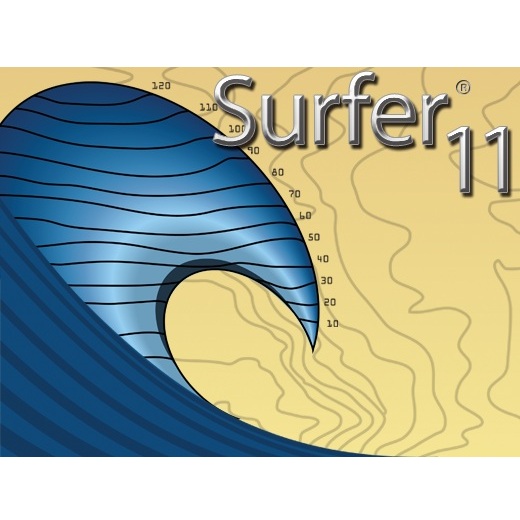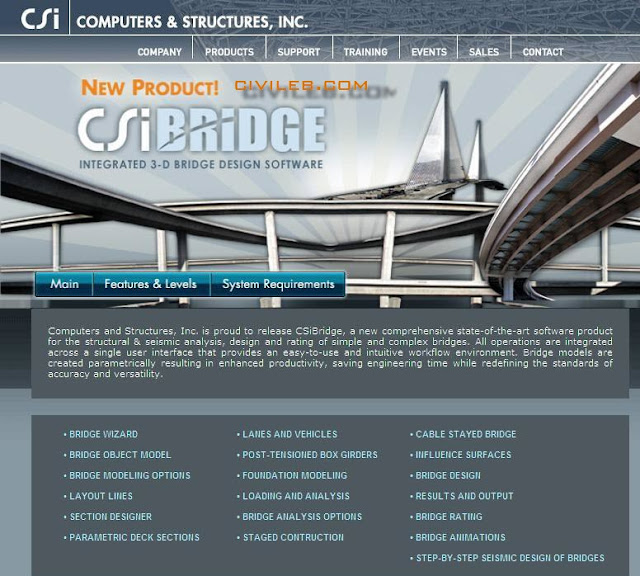![[Image: IS_sap.jpg]](http://eng-syria.net/proimage/IS_sap.jpg)
![[Image: Truck_anima.gif]](http://s6.postimage.org/tueds847z/Truck_anima.gif)
The SAP name has been synonymous with state-of-the-art analytical methods since its introduction over 30 years ago. SAP2000 follows in the same tradition featuring a very sophisticated, intuitive and versatile user interface powered by an unmatched analysis engine and design tools for engineers working on transportation, industrial, public works, sports, and other facilities.
From its 3D object based graphical modeling environment to the wide variety of analysis and design options completely integrated across one powerful user interface, SAP2000 has proven to be the most integrated, productive and practical general purpose structural program on the market today. This intuitive interface allows you to create structural models rapidly and intuitively without long learning curve delays. Now you can harness the power of SAP2000 for all of your analysis and design tasks, including small day-to-day problems. Complex Models can be generated and meshed with powerful built in templates. Integrated design code features can automatically generate wind, wave, bridge, and seismic loads with comprehensive automatic steel and concrete design code checks per US, Canadian and international design standards.
Advanced analytical techniques allow for step-by-step large deformation analysis, Eigen and Ritz analyses based on stiffness of nonlinear cases, catenary cable analysis, material nonlinear analysis with fiber hinges, multi-layered nonlinear shell element, buckling analysis, progressive collapse analysis, energy methods for drift control, velocity-dependent dampers, base isolators, support plasticity and nonlinear segmental construction analysis. Nonlinear analyses can be static and/or time history, with options for FNA nonlinear time history dynamic analysis and direct integration.
From a simple small 2D static frame analysis to a large complex 3D nonlinear dynamic analysis, SAP2000 is the easiest, most productive solution for your structural analysis and design needs.
![[Image: image.jpg]](http://s6.postimage.org/rs7f778m9/image.jpg)
Mediafire unlock password: nhawe
Click![[Image: fr.png]](http://cdn.adf.ly/images/skip_ad/fr.png) after waiting 5s to get mediafire link.
after waiting 5s to get mediafire link.
1. CSI SAP2000 v7.42
2. CSI SAP2000 v9.03
3. CSI SAP2000 v10.0
4. CSI SAP2000 v11
5. CSI SAP2000 v12.0
6. CSI SAP2000 v14.2.2
7. CSI SAP2000 v15.0.1
Cra**k:
8. CSI SAP2000 v15.1.0
From its 3D object based graphical modeling environment to the wide variety of analysis and design options completely integrated across one powerful user interface, SAP2000 has proven to be the most integrated, productive and practical general purpose structural program on the market today. This intuitive interface allows you to create structural models rapidly and intuitively without long learning curve delays. Now you can harness the power of SAP2000 for all of your analysis and design tasks, including small day-to-day problems. Complex Models can be generated and meshed with powerful built in templates. Integrated design code features can automatically generate wind, wave, bridge, and seismic loads with comprehensive automatic steel and concrete design code checks per US, Canadian and international design standards.
Advanced analytical techniques allow for step-by-step large deformation analysis, Eigen and Ritz analyses based on stiffness of nonlinear cases, catenary cable analysis, material nonlinear analysis with fiber hinges, multi-layered nonlinear shell element, buckling analysis, progressive collapse analysis, energy methods for drift control, velocity-dependent dampers, base isolators, support plasticity and nonlinear segmental construction analysis. Nonlinear analyses can be static and/or time history, with options for FNA nonlinear time history dynamic analysis and direct integration.
From a simple small 2D static frame analysis to a large complex 3D nonlinear dynamic analysis, SAP2000 is the easiest, most productive solution for your structural analysis and design needs.
![[Image: image.jpg]](http://s6.postimage.org/rs7f778m9/image.jpg)
Mediafire unlock password: nhawe
Click
![[Image: fr.png]](http://cdn.adf.ly/images/skip_ad/fr.png) after waiting 5s to get mediafire link.
after waiting 5s to get mediafire link.1. CSI SAP2000 v7.42
2. CSI SAP2000 v9.03
3. CSI SAP2000 v10.0
4. CSI SAP2000 v11
Code:
5. CSI SAP2000 v12.0
Code:
6. CSI SAP2000 v14.2.2
7. CSI SAP2000 v15.0.1
Code:
8. CSI SAP2000 v15.1.0






















